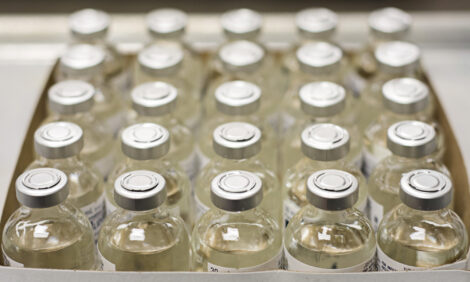



Foster Farms Demonstrates How to Combat Salmonella
US - Foster Farms, California's biggest chicken producer, has been accused of poisoning people with salmonella bacteria. After an outbreak last autumn, the US Department of Agriculture threatened to shut down three of the company's plants.However, since then, the company has reduced its rates of salmonella contamination dramatically, reports NPR.
Some food safety experts are now saying that the whole poultry industry should now follow this company's example.
The company is also taking the lead in figuring out a food safety mystery: How in the world do tests detect salmonella frequently on cut-up chicken parts but not on whole chicken carcasses?
According to USDA regulations, no more than 7.5 per cent of the chicken carcasses coming from a chicken plant can test positive for salmonella.
Foster Farms — which turns out millions of pounds of chicken meat every week — usually does much better than that. "We had zero per cent on most of our carcass sampling for the past three or four years," said Bob O'Connor, a veterinarian who's worked at the company for the past 17 years.
The company's executives thought that they were doing really well.
Then, last summer, the Centers for Disease Control and Prevention found evidence that chicken from Foster Farms had caused a wave of salmonella infections. More than 600 people had gotten sick.
In response to the outbreak, Foster Farms brought in outside safety advisors, including Acheson, the former FDA official, who now works as a consultant to food companies. Together, they embarked on a search for the cause of their problem.
They tested slaughtered chickens, and picked up a clue. Birds that grew up on some farms were much more likely to carry salmonella than birds from other farms.
So the company started testing everywhere for salmonella. Some experts thought the bacteria might be invading the chicken houses from outside, carried by mice or wild birds or beetles. So the company tested for salmonella on the dirt near the houses, and in the green, irrigated fields nearby.
But they discovered that the further they moved from the chicken house, the less salmonella they found. The contamination, in fact, was concentrated in the houses.
It seems that once salmonella bacteria got established inside those houses, they stayed there, and infected each new flock of chickens that came to live there.
"So the interventions that we did for broilers were to really focus on cleaning up the houses themselves," Mr O'Connor said.
"The whole entire house was soaped down. Then you disinfect it. And then you let it sit. We let these farms sit for about six weeks without any birds in them."
Foster Farms did a lot of other things, too. It made sure that the breeding hens in their hatcheries were salmonella-free, because if those hens have salmonella, their children will, too. The company put more money into vaccination, and spent more time washing equipment in processing plants.
It took months, but it made a big difference. The share of chicken parts that tested positive for salmonella fell from 20 per cent to less than five per cent.
So for now, the FDA is asking companies to reduce salmonella contamination, but it's not requiring chicken meat to be completely salmonella-free.








